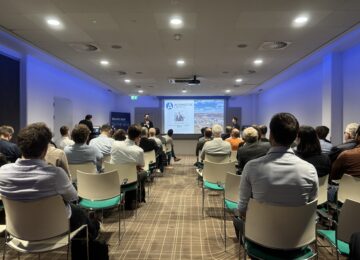Further analysis: IBO shows need for flexibility and energy storage
The Interdepartmental Inquiry (IBO) into the Costing of Electricity Infrastructure was published today. Officials estimate the total cost to realize the grid blackout task at €195 billion. To manage these grid costs - as well as the affordability of this transition for citizens and businesses - the researchers believe it is crucial to create more flexibility in the system.
Results IBO 'Financing electricity infrastructure'
The IBO (Interdepartmental Policy Research) is an independent official study conducted by several ministries on the financing of future electricity infrastructure.
The IBO shows that the cost of building out the infrastructure amounts to €195 billion. Total grid management costs for electricity will therefore rise from €6.9 billion in 2024 to €20 billion in 2040. This leads to an expected cost increase in energy bills citizens and businesses. Grid operators expect grid tariffs to increase by 4.8% to 6.7% per year, depending on the grid user group.
The government has identified several ways to limit this cost increase. This can be done by (1) subsidizing grid operator(s) or spreading grid costs over time; (2) compensating grid users "below the line" in a targeted way; and (3) sharing costs internationally.
In addition, measures have also been inventoried to reduce the overall network operator costs. To control costs, the IBO sees first and foremost an important role for making grid use more flexible.
Flexibilizing grid use
The report emphasizes that energy transition requires not only a substantial expansion of the electricity grid, but also the optimal deployment of storage and flexibility measures. By bringing generation, use and storage capacity closer together, the investment challenge can be significantly reduced. According to the calculations, by intervening in the area of flexibility, among others, the total investment task in 2040 can be reduced by 3.5 to 22.5 billion euros.
The report identifies increasing interest in connecting batteries (along with electrolysers) as a solution to reduce grid congestion. It emphasizes that the "crux" lies in placing these storage facilities in the right locations. By strategically placing batteries, peak loads on the power grid can be effectively smoothed out. For example, the report indicates that location control on the high-voltage grid could yield potential savings of about €2.5 billion.
The government is working with grid operators and co-governments to identify specific locations where batteries can be optimally deployed. It is important here that grid managers accurately determine where and in what quantity storage capacity is needed and that they set clear contractual conditions for the deployment of these batteries. One suggestion, for example, is for grid operators to issue their own storage tenders so that investment and operational deployment can be tightly matched to the physical capabilities of the grid.
In addition to battery storage, the report also discusses heat buffers as an accompanying policy. These are seen as an important measure to reduce the loss of comfort that can result from more stringent flexibility controls. Because flexibility measures can, for example, lead to homes becoming 1 to 2 degrees colder, it is suggested that flanking policies be developed. One concrete proposal is to subsidize heat buffers at small consumers. Based on an estimate, it is indicated that a one-time subsidy between €400 million and €800 million would be needed to mitigate the comfort loss while reducing the investment challenge.
Offshore storage: opportunities for large-scale storage and LDES
The IBO also discusses the development of alternative generation and storage technologies such as large-scale batteries and CAES systems. This specifically looks at using the technologies to better harness wind energy. Specifically for offshore storage capacity, it is proposed that the subsidy requirement should equal that of onshore storage with a current estimate of about €200 million through 2035 to cover the unprofitable top.
Impact net rates
Researchers also looked at the impact of tariffs on end users, as well as for batteries. The report shows that significant schemes exist in other European countries to reduce the cost of battery storage. This makes it attractive for investors to establish large-scale battery storage just across the border to take advantage of more favorable tariff conditions. To solve this, several proposals are made.
An important proposal in the report is the need, at the European level, to further harmonize the tariff methodology. The idea is that tighter regulatory alignment could result in all member states, including the Netherlands, adopting a more cost-reflective tariff structure. Pending European harmonization, the report suggests considering temporary measures in the short term. These measures could consist of subsidies or other financial compensations. The aim is to cushion the direct cost increase due to higher network tariffs.





